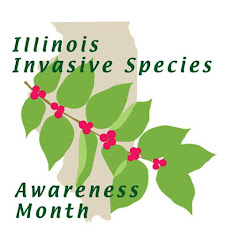The Continental Dialogue on Non-Native Forest Insects and Diseases
by Andi Dierich, Illinois Forest Pest Outreach Coordinator, ADierich@mortonarb.org.
 The Continental Dialogue on Non-Native Forest Insects and Diseases is a collaborative effort to pursue change in policies and practices around non-native forest pests and pathogens. Recognizing that invasive pests threaten our valuable urban and rural forest, the Dialogue holds meetings among stakeholders to discuss issues and ideas and brainstorm solutions.
The Continental Dialogue on Non-Native Forest Insects and Diseases is a collaborative effort to pursue change in policies and practices around non-native forest pests and pathogens. Recognizing that invasive pests threaten our valuable urban and rural forest, the Dialogue holds meetings among stakeholders to discuss issues and ideas and brainstorm solutions. The urban and rural forest is an important green feature of our landscape employing more than 1.6 million people and adding $231.5 billion to the national economy. The environmental and aesthetic benefit of urban trees is significant in our ever changing landscape but continues to be threatened by the introduction of non-native forest insects and diseases. This byproduct of a globalized market continues to pose hurdles for managers and users of urban and rural forest alike, impacting several trades and stakeholder groups along the way. The Dialogue is a platform to seek and leverage opportunities to change policies and practices revolving around non-native forest pests and pathogens. The Dialogue collaborates with many partners across the U.S. These meetings have brought together many stakeholders, including The Nature Conservancy; the US Department of Agriculture’s Animal and Plant Health Inspection Service; the US Forest Service; the American Nursery & Landscape Association; the Arbor Day Foundation; the National Association of State Foresters; the Society of American Foresters; the Society of Municipal Arborists; and The Morton Arboretum. A number of initiatives have resulted.
The Don’t Move Firewood campaign, aimed at educating the public not to transport firewood that may carry eggs or larvae of tree pests such as the emerald ash borer, came out of Dialogue meetings in 2006 and 2007. The multimedia campaign, which continues to grow, began with the launch of a website in 2008. It has now has reached nearly 6,000 people throughout the US through its Facebook and Twitter feeds alone.
Videos on the website have been recognized for their detail and presentation. Lurking in the Trees is a 2010 documentary that follows the city of Worcester, Mass., in its response to an infestation by the Asian longhorned beetle. It continues to be used in the campaign for awareness of the beetle’s threat. Trees, Pests & People is a section of the website featuring short videos that tell the stories of walnut, ash and avocado trees and their pests.
Recently, the Dialogue has contributed to the Healthy Trees, Healthy Cities initiative. Now being implemented in Los Angeles, Tennessee, Philadelphia, and Boston, this Nature Conservancy program seeks to create environmental stewards to provide a first line of defense against invasive plants and animals as well as maintaining and caring for the trees that make up our urban forest.
The Dialogue also has created tools such as A Decision-making Guide for Invasive Species Program Managers and an outreach document for woodworkers and wood-turners on how to avoid spreading invasive pests in the wood they use.
The 2013 Continental Dialogue took place November 4 and 5 in Pittsburg in conjunction with the Arbor Day Foundation Partners in Community Forestry Conference. The Dialogue welcomed new partners including Davey Tree and the American Public Gardens Association Sentinel Plant Network.
Among the presentations two are especially worth noting:
The American Firewood Producers and Distributors Association will soon announce a new certification program for sanitation of wood products above the current level required by the International Standards of Phytosanitary Measures No. 15. This means that the clients of AFPDA—big box home centers and other retailers—stores will now play a critical role in preventing the spread of pests and diseases through firewood. It also will require changing the messaging of the Don’t Move Firewood campaign to include “buying certified” wood.
The second presentation, focused on nurseries. The National Plant Board is drafting and organizing a voluntary certification process for the nursery trade. This certification, which takes a system approach, ideally would allow for greater pest and pathogen control by increasing checkpoints in the pathways by which infected plants move. By harmonizing international and national best practices and regulations, it likely would make the transfer of nursery stock from one area to another more seamless.
The Continental Dialogue on Non-Native Forest Insects and Diseases still is seeking new ideas and partnerships to continue efforts to control invasive pests and pathogens. Sign up to receive alerts and other information about the dialogue’s activities.




